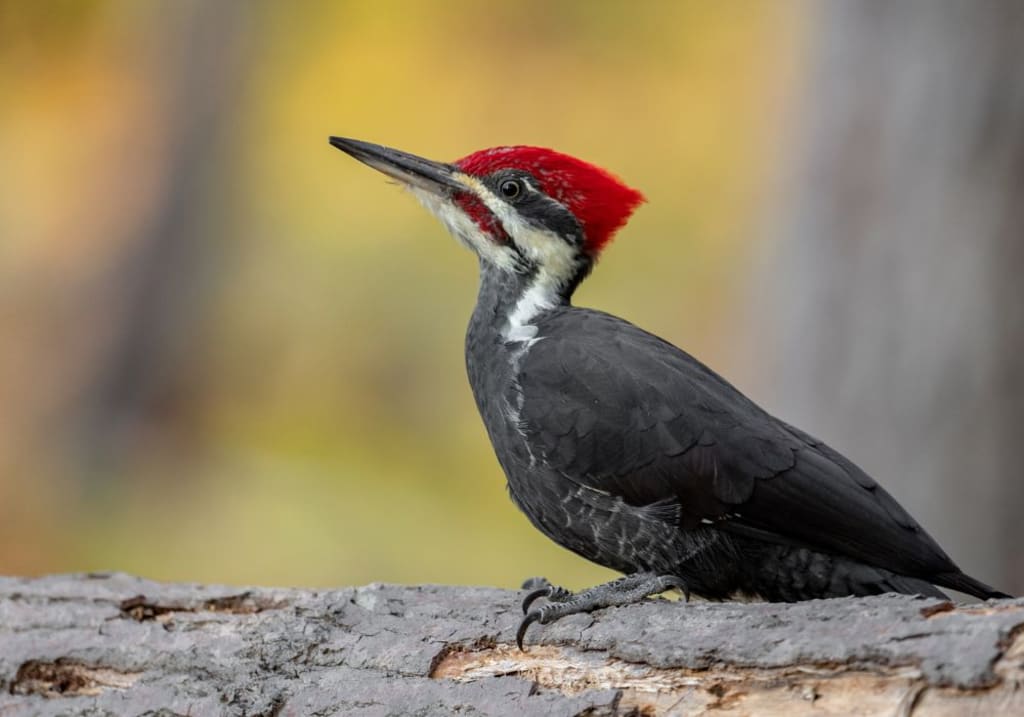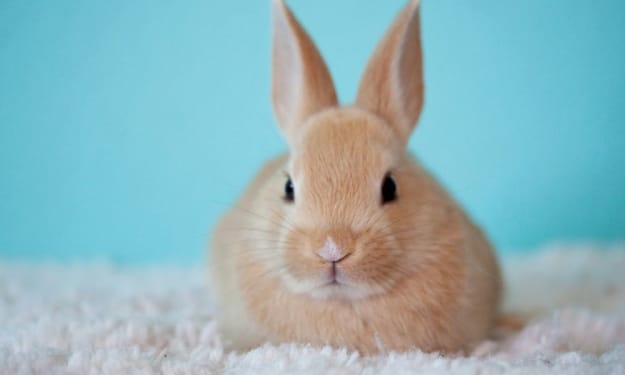Uncovering the Secrets of Woodpecker Species
Determining the Type

Introduction to Woodpeckers: Overview of species, physical characteristics, and behaviors
Woodpeckers are one of the most easily recognizable bird species due to their unique appearance and behavior. With over 200 species of woodpeckers across the globe, understanding how to identify these unique birds is an important part of appreciating their beauty and value to the environment. While it may seem daunting at first, learning how to identify woodpecker species can be a rewarding challenge that helps us understand these special birds better.
In order to determine which type of woodpecker you are looking at, there are several key physical traits and behaviors that can provide useful clues. By taking note of different features such as body size and shape, head shape and patterning, bill size and shape, tail length, colors, flight pattern, drumming patterns, nest hole shape, habitat preferences and range information you can begin to narrow down the list.
Body Size & Shape
The body size of woodpeckers varies greatly according to species and ranges from very small (like the Downy Woodpecker) to quite large (like the Imperial Woodpecker). This can provide a helpful clue when attempting to determine which type of woodpecker you're looking at. In addition to overall size, taking note of body proportions is also important when identifying a particular species. Does it appear short and plump or long-legged? Is the neck particularly long or short? How about its wings? All these factors can help narrow down your options.
Head Shape & Patterning
An important feature when determining what type of woodpecker is in front of you is head shape. Look for differences in head size between adults and juveniles; does one have a larger crest or shorter bill than the other? Also pay attention to any distinctive patterning on its face or head that could help narrow down the possibilities.
Bill Size & Shape
The bill is another helpful tool for determining which type of woodpecker you're seeing as its shape and size varies greatly between species. Is it long with a sharp point like many sapsuckers or more chisel-like like flickers? Also look for signs that indicate whether it's an active feeder (longer bills) or mainly insectivorous (shorter bills).
Tail Length & Colors
Tail length is also helpful when attempting to identify different types of woodpeckers as it will vary between species. Longer tails tend to be indicative of aerial acrobats like flickers while more compact tails with stiff feathers might indicate a ground-feeding variety like sapsuckers. Lastly take note if there are any distinctive coloration patterns on its wings or tail feathers; this too may help distinguish one variety from another.
Flight Patterns & Drumming Patterns
Flight patterns can give away some crucial clues about which type of woodpecker you're seeing – do they fly in straight lines or undulating patterns? Can they hover in midair or do they stay close to trees at all times? Additionally listen for any drumming patterns; this too will change depending on what kind you’re observing.
Nest Hole Shape & Habitat Preferences
Another way to distinguish which bird you’re looking at is by inspecting nest hole shapes; do they have round entrances like flickers do or more angular ones like sapsuckers? Finally keep an eye out for where they tend to live; some prefer open habitats while others thrive in forests – this too can help separate one variety from another.Range Information < div >Last but not least consider what range information you have available – does this particular bird live far away from your location such as in tropical climates?
If so then chances are it would be something more exotic than one found closer by! By taking into account all these various factors - body size/shape, head shape/patterning bill size/shape , tail length/colors , flight patterns/drumming patterns , nest hole shape/habitat preferences , range information -you'll likely find that identifying different types of woodpeckers isn't so difficult after all! So why not give it a try today ? You never know what fascinating new discoveries await!
The Different Types of Woodpeckers: How to identify the various species by size, coloration, beak shape, and other distinguishing features
When it comes to determining the type of woodpecker you are seeing, there are several factors that can help people uncover the secrets of woodpecker species. How to identify woodpecker species can be done by looking at size, coloration, beak shape and even certain behaviors or sounds they make. All of these features can help us determine the exact species we are seeing.
Size
Size is one of the easiest ways to identify a woodpecker species. Smaller birds range from about six inches (such as with a Downy Woodpecker) to slightly larger than a Wren (such as a Hairy Woodpecker). Larger birds such as Pileated Woodpeckers have been known to grow up to nearly 20 inches in length.
Coloration
The coloration of woodpeckers come in a wide variety. Depending on their types they can range from light browns and grays to deep reds and blacks. Some may feature bright spots or patches, while others may have pale stripes or flecks. All of these colors can help us differentiate between different species.
Beak Shape
When we think about what sets woodpeckers apart from other birds, most people think about their iconic beaks. Woodpeckers have chisel like bills which they use for pecking into trees and bark for food or nesting material. However not all woodpeckers have this same shape beak; some may appear more slender while others may appear shorter or thicker.
Behavior & Sounds
Woodpeckers also display certain behaviors and make specific sounds depending on their type. These behaviors can range from drumming patterns used by males during mating season or rapid tapping used for communication purposes between individuals within a flock. Sounds also vary between different types; some might make loud squawking noises while others only make soft chirps.
Woodpeckers come in many shapes and sizes which makes them unique and fun to observe! By examining size, coloration, beak shape and behavior we can unlock the secrets behind different types of woodpeckers.
Nests and Habits: Where and how different woodpecker species live and build their homes
One of the most important aspects to consider when determining the type of woodpecker species present in a given area is the type of nests and habits they have. Different species have varying preferences in terms of where they build their nests, as well as their habits regarding foraging and mating. By understanding these patterns, it is possible to determine what kind of woodpecker species are in the vicinity. When it comes to building nests, certain woodpeckers will choose dead trees or live trees that have cavities or other natural openings already present.
These include species such as Red-Headed Woodpeckers and Red-Bellied Woodpeckers, which prefer open cavities that are easy to access and build upon. Other woodpecker species prefer fresh timber with no pre-existing openings, like Downy Woodpeckers or Hairy Woodpeckers. These often hammer into fresh trees to make cavities for their nesting purposes. The type of habitat also plays an important role when it comes to determining the type of woodpecker species present in a given area. For example, certain woodpeckers such as Flickers prefer open areas with plenty of grasses where they can find food while other species such as Pileated Woodpeckers prefer more heavily forested areas.
Knowing what types of habitats are available in an area can narrow down the possibilities when identifying different woodpecker species present there. In addition to nesting habits, mating habits can also provide useful clues regarding particular types of woodpecker species found in a certain area. For example, some species such as Gila Woodpeckers display courtship rituals which consist of drumming on a tree trunk followed by a flight pattern mirroring that of their partner's movements while others like Yellow-bellied Sapsuckers perform loud vocalizations during mating season making them easier to find during this period. Identifying this behavior can help one map out which kinds of woodpeckers are living in any given location.
Diet: What woodpeckers eat in the wild and how to provide food for them in captivity
When it comes to determining the type of woodpecker, what they eat can be an important clue. Different species of woodpeckers have different diets, so by understanding what your bird is eating, you can make a more informed guess as to which species it belongs to. In the wild, woodpeckers typically feed on insects like ants and beetles, as well as larvae and pupae. They also enjoy fruits such as berries, nuts and seeds, and will sometimes feed on sap from trees. However, their diet is not limited to these items- some larger species such as the pileated woodpecker may even hunt small mammals!
When it comes to providing food for captive woodpeckers, there are a few things you should keep in mind. Variety is key; provide a mix of fruits and vegetables with a special emphasis on protein-rich items like mealworms or other insect larvae. Nuts should also be included in your bird’s diet; almonds are particularly popular among woodpeckers. Additionally, make sure your bird has access to water at all times for drinking and bathing. By providing a varied diet that meets all their nutritional needs, you’ll be able to keep your pet happy and healthy – and help them determine which species they belong to!
Conservation Status: Learn about the various conservation efforts in place for protecting woodpecker populations
Woodpeckers are an integral part of the environment, playing a vital role in the health of various ecosystems. However, due to increasing deforestation and habitat loss, many species of woodpeckers have been placed on the endangered species list. Conservationists are now implementing various conservation efforts in order to protect these birds and ensure their populations remain healthy. Identifying woodpecker species is the first step towards understanding their conservation status. By recognizing which species need protection, scientists can focus their efforts on ensuring that these vulnerable birds have a safe place to breed and nest.
In addition to this, understanding the ecology and behavior of each species helps develop tailored conservation efforts that are more effective in protecting them. Conservation efforts can range from habitat protection and restoration to captive breeding and reintroduction programs. Each of these measures has its own set of advantages and drawbacks; however, they all play an essential role in ensuring that woodpecker populations remain healthy throughout different parts of the world. Habitat protection is perhaps one of the most important steps for woodpecker conservation. This includes preserving current habitats as well as creating new ones for woodpeckers by planting trees or constructing artificial nesting boxes.
Additionally, promoting sustainable forestry practices helps reduce habitat destruction and ensure that woodpecker populations remain healthy. Captive breeding programs also help boost woodpecker numbers by creating a larger population which can then be reintroduced into their natural habitats. This program involves providing safe environments where eggs can be laid safely without any risk of predation or environmental disturbances disrupting their incubation period. Reintroduction programs involve releasing captive-bred birds back into the wild where they can establish viable populations after being monitored carefully for several months or even years before release.
In addition to these measures, researchers also use techniques such as acoustic monitoring to track down endangered species as well as promote awareness about them through educational campaigns and media outlets such as television documentaries or social media platforms.
About the Creator
Hasan
Welcome...
In this site of mine you can learn amazing things and many information that you don't know so please subscribe to my site.
Enjoyed the story? Support the Creator.
Subscribe for free to receive all their stories in your feed. You could also pledge your support or give them a one-off tip, letting them know you appreciate their work.






Comments
There are no comments for this story
Be the first to respond and start the conversation.